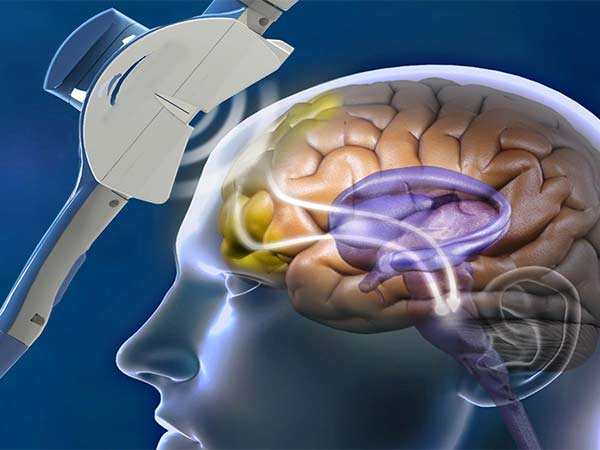Magnetic brain stimulation alters negative emotion perception
A new study in Biological Psychiatry: Cognitive Neuroscience and Neuroimaging looks at the modulation of emotion in the brain
 A new study published in Biological Psychiatry: Cognitive Neuroscience and Neuroimaging reports that processing of negative emotion can be strengthened or weakened by tuning the excitability of the right frontal part of the brain.
A new study published in Biological Psychiatry: Cognitive Neuroscience and Neuroimaging reports that processing of negative emotion can be strengthened or weakened by tuning the excitability of the right frontal part of the brain.
Using magnetic stimulation outside the brain, a technique called repetitive transcranial magnetic stimulation (rTMS), researchers at University of Münster, Germany, show that, despite the use of inhibitory stimulation currently used to treat depression, excitatory stimulation better reduced a person’s response to fearful images.
The findings provide the first support for an idea that clinicians use to guide treatment in depression, but has never been verified in a lab. “This study confirms that modulating the frontal region of the brain, in the right hemisphere, directly effects the regulation of processing of emotional information in the brain in a ‘top-down’ manner,” said Cameron Carter, M.D., Editor of Biological Psychiatry: Cognitive Neuroscience and Neuroimaging, referring to the function of this region as a control center for the emotion-generating structures of the brain. “These results highlight and expand the scope of the potential therapeutic applications of rTMS,” said Dr. Carter.
In depression, processing of emotion is disrupted in the frontal region of both the left and right brain hemispheres (known as the dorsolateral prefrontal cortices, dlPFC). The disruptions are thought to be at the root of increased negative emotion and diminished positive emotion in the disorder. Reducing excitability of the right dlPFC using inhibitory magnetic stimulation has been shown to have antidepressant effects, even though it’s based on an idea-that this might reduce processing of negative emotion in depression-that has yet to be fully tested in humans.
Co-first authors Swantje Notzon, M.D., and Christian Steinberg, Ph.D, and colleagues divided 41 healthy participants into two groups to compare the effects of a single-session of excitatory or inhibitory magnetic stimulation of the right dlPFC. They performed rTMS while the participants viewed images of fearful faces to evoke negative emotion, or neutral faces for a comparison.
Excitatory and inhibitory rTMS had opposite effects-excitatory reduced visual sensory processing of fearful faces, whereas inhibitory increased visual sensory processing. Similarly, excitatory rTMS reduced participants’ reaction times to respond to fearful faces and reduced feelings of emotional arousal to fearful faces, which were both increased by inhibitory rTMS.
Although the study was limited to healthy participants, senior author Markus Junghöfer, Ph.D., notes that “…these results should encourage more research on the mechanisms of excitatory and inhibitory magnetic stimulation of the right dlPFC in the treatment of depression.”
Source: Elsevier
Full bibliographic information:
The article is “Modulating emotion perception – Opposing effects of inhibitory and excitatory prefrontal cortex stimulation,” by Swantje Notzon, Christian Steinberg, Peter Zwanzger, and Markus Junghöfer . It appears in Biological Psychiatry: Cognitive Neuroscience and Neuroimaging, published by Elsevier.

